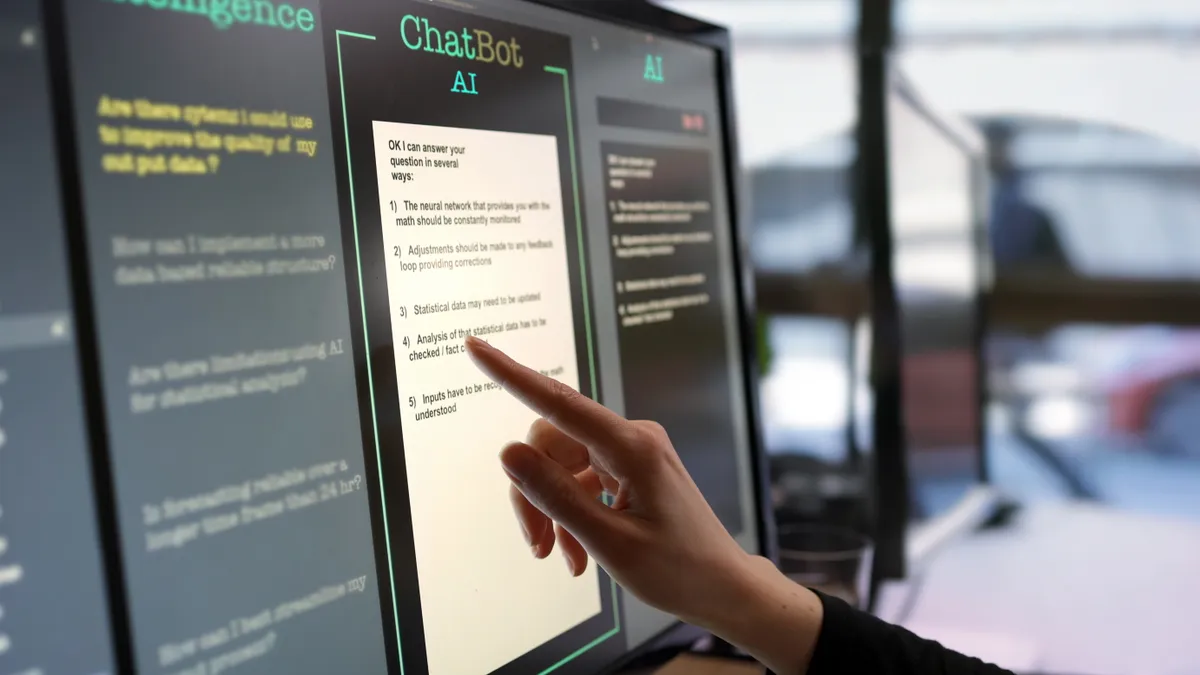Angus Frost is a senior IT consultant at Chicago-based Burger Consulting Group, a firm focused on construction technology. Opinions are the author’s own.
Businesses have become fixated on artificial intelligence, and the heavy civil construction industry is no exception. As someone who monitors this industry, I fully agree that AI's integration into this sector is not just a good idea but really a necessity, driven by the need to enhance efficiency, reduce costs and improve safety.
But in an area where mistakes can cost lives, how do you navigate the hype-cycle to determine where AI innovation is mature enough to provide value?

What sets heavy and civil contractors apart from other construction firms is an even bigger reliance on labor, large fleets of equipment, material manufacturing and trucking. All of these areas show tremendous potential for improvement through AI, but progress has been uneven. Here’s a look at the maturity of various AI use cases in heavy civil construction and how these technologies are reshaping the industry.
Planning and design
One of the earliest applications of AI in heavy civil construction is in project planning and design. AI-augmented scheduling tools provide the ability to perform what-if analysis and identify potential project risks more quickly than could be achieved before.
For example, a large GC working on widening 8 miles of highway on the East Coast was able to net more than $25 million from completion bonuses and savings on labor and materials through scheduled optimization.
AI-powered design tools such as BIM systems leverage machine learning algorithms to create detailed 3D models of construction projects. These models facilitate better visualization, allowing stakeholders to identify potential issues before construction begins.
Conclusion: Although the use of BIM in heavy civil construction in the U.S. is still underutilized, its value has been proven in many countries outside the U.S. Adoption of these types of tools is slow, yet increasing, with vendors in the space demonstrating a growing level of maturity.
Safety management and risk assessment
Safety is a paramount concern in the heavy civil construction industry. AI enhances safety management through real-time monitoring and predictive analytics. For instance, AI-driven cameras and sensors can detect unsafe behavior or conditions on site and alert supervisors.
Indeed, a large U.S.-based heavy civil contractor recently reduced recorded incidents by 28% and cut lost time by 35% using this technology.
Trench safety is of particular interest to OSHA and the National Utility Contractors Association. It’s an area where early warning from AI-assisted technology can have a significant impact. Much like adaptive braking in cars, AI-driven sensors on heavy equipment can detect workers in the path of machinery and alert the operator to stop the equipment.
Additionally, with good cumulative inspection data, AI algorithms can analyze historical data to predict and mitigate potential risks. Factors such as weather, employee turnover, frequency of safety training and a project being behind schedule all have an impact on potential safety incidents.
Conclusion: While the technology itself is advanced, widespread adoption is still growing. The primary barriers include the high initial cost of implementation and the need for comprehensive training for the workforce. However, companies that have adopted AI for safety report fewer accidents and improved compliance with safety regulations.
Automated construction equipment
Automation in construction is rapidly advancing, with AI playing a crucial role in the development of autonomous equipment. Drones, robotic arms and autonomous vehicles controlled by AI are being used for tasks such as site surveys, material transport, optimized cut/fill and even construction tasks like bricklaying and welding.
Florida-based Ajax Paving is using autonomous vehicles to address labor shortages. A single operator is able to manage multiple machines at different jobsites without losing time driving between each.
Certainly, the machine-control technologies that have been around for a while now are an early example of automation.
Conclusion: Automated equipment is an emerging technology with significant potential. Current applications are mostly in pilot stages or used in controlled environments. Although greater adoption exists outside of the U.S. As AI technology advances and becomes more cost-effective, its adoption is expected to increase.
Supply chain optimization
AI is transforming supply chain management in construction by optimizing logistics and inventory management. Machine learning algorithms can predict demand for materials, identify the most efficient supply routes, and manage inventory levels in real time.
For example, AGIS, a large infrastructure and mining contractor in Brazil, uses supply chain automation to optimize material delivery to jobsites.
This reduces delays and ensures that materials are available when needed. This use case is a good example of how important it is to have good data, since the advantage you get goes out the window if your data is bad.
Conclusion: AI-powered supply chain optimization is gaining traction, especially among large construction firms. While the technology is mature, its implementation requires integration with existing enterprise resource planning systems and collaboration with suppliers.
Quality control and assurance
Ensuring high-quality construction is critical for project success. AI assists in quality control by analyzing images and data from construction sites to identify defects or deviations from the project plan and specifications. For instance, computer vision systems can detect cracks in concrete or inconsistencies in structural elements. While AI-based solutions exist for vertical construction, tools for use in heavy civil are still new. One example is Drexel University, which has made great strides in pavement imaging technology for crack detection.
Conclusion: AI for quality control is relatively mature and is being adopted in various projects. The main challenge is the integration of AI systems with traditional quality assurance processes and the need for skilled personnel to interpret AI-generated data.
AI-driven decisions
The number of decisions a project team has to make in any given day to keep their project on track, on budget and safe is staggering. These decisions get made with or without good data or decision support.
AI-driven decision support systems provide construction managers with insights and recommendations based on real-time data analysis which can include external data sources.
These systems can predict project outcomes, suggest resource allocations and identify potential delays or budget overruns. Industry associations are using generative AI to assist in providing their members with more detailed and specific information needed to support their activities through virtual assistants.
Conclusion: The availability and effectiveness of these varies greatly, with much depending on the quality of the data input and the ability of managers to understand the data presented, trust it, and act on AI-generated recommendations.
While the potential of AI in heavy civil construction is significant, several challenges hinder its full adoption. These include the high cost of AI technologies, the need for skilled personnel, data privacy concerns and resistance to change within the industry. However, the continued evolution of AI in this sector suggests that many areas of AI use will extend beyond the hype-cycle.



















